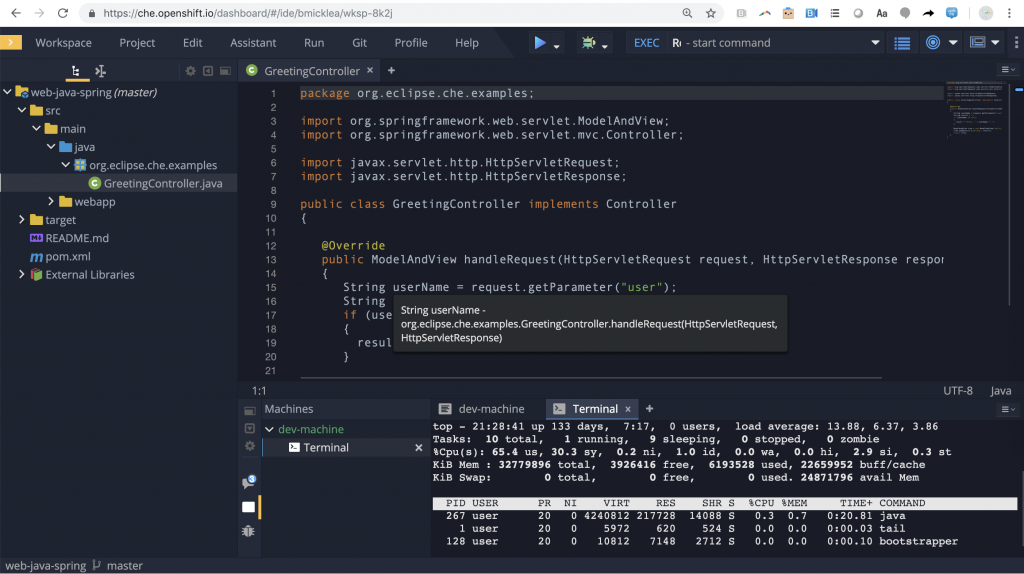Red Hat Launches App Dev Platform Native to Kubernetes
Red Hat is making generally available an application development environment that runs natively on Kubernetes.
Brad Micklea, senior director for developer experience and programs at Red Hat, says CodeReady Workspaces will enable developers to locally develop applications on an instance of Kubernetes running on a PC that mirrors the production Kubernetes environment an application ultimately will be deployed in.
Based on the open source Eclipse Che integrated development environment (IDE), the browser-based application development environment should help accelerate the rate at which cloud-native applications are deployed on Kubernetes clusters running in Red Hat OpenShift platform-as-a-service (PaaS) environments that are based on Kubernetes or on Red Hat Enterprise Linux (RHEL), Miklea says. It will be up to IT organizations to decide whether to host Red Hat OpenShift or RHEL in the cloud or in an on-premises IT environment, he adds.
 CodeReady Workspaces is designed to make it easy for developers to spin up a Kubernetes cluster using a series of wizards, which means developers no longer need an IT operations team to make a Kubernetes cluster available to them. That capability should encourage developers to experiment more with developing cloud-native applications, adds Micklea, noting all the developer’s code, dependencies and artifacts are managed within OpenShift pods and containers.
CodeReady Workspaces is designed to make it easy for developers to spin up a Kubernetes cluster using a series of wizards, which means developers no longer need an IT operations team to make a Kubernetes cluster available to them. That capability should encourage developers to experiment more with developing cloud-native applications, adds Micklea, noting all the developer’s code, dependencies and artifacts are managed within OpenShift pods and containers.
Red Hat CodeReady Workspaces also provides access to Factories, which are templates containing the source code location, runtime and tooling configuration and commands needed for a project. Factories enable development teams to spin up a development environment on top of Kubernetes in minutes, and team members can be granted access using any device configured with a browser running any operating system or any IDE.
DevOps teams can integrate Factories with their preferred public or private version control repositories; determine who should have access to workspace permissions and resourcing; limit what code can be downloaded to a laptop; and leverage Lightweight Directory Access Protocol (LDAP) or Active Directory (AD) authentication to provide single sign-on capabilities.
Micklea says CodeReady Workspaces is designed to fill a critical gap that has limited Kubernetes adoption. In the absence of a rich application development experience based on an environment that is easy to set up, he notes, many developers will continue to focus their efforts on building monolithic applications using frameworks they are already know.
It may be a while before microservices-based applications exceed the number of monolithic applications deployed by enterprise IT organizations. Many enterprise IT organizations are still wrestling with attaining the level of skill required to deploy and manage Kubernetes clusters at scale.
In the meantime, however, the number of Kubernetes clusters being spun up in application development environments will continue to increase exponentially. As that process continues to occur, it’s now only a matter of time before there’s enough critical mass of applications that run natively on Kubernetes to force the deployment issue in production environments.


